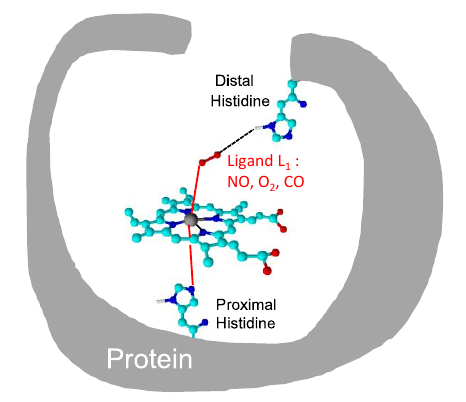N. Shafizadeh, M.E. Crestoni, A. de la Lande, B Soep. Intern. Rev. Phys. Chem. 2021, 40, 365-404 . doi.org/10.1080/0144235X.2021.1952006. Link to of full text in HAL.

This review summarizes the state-of-the-art knowledge of heme ligation in the gas phase. The unique aspect of the gas phase approach is to allow a step-by-step ligation of heme and thus enables the analysis of the properties of -four, -five and -six coordinate hemes in vacuo, under conditions directly comparable with quantum calculations. This approach also allows the characterization of situations uncommon in Nature, completing the coordination spectrum of hemes: four coordinate heme and protonated heme, an intermediate between ferrous and ferric heme. Therefore, a complete set of systems is described for the ferrous and ferric cases and there is no discontinuity between the two oxidation states of iron, so that the same mechanisms are at work, donation and back donation of different strengths depending upon the ligand. The similarity of ligation properties in ferrous and ferric hemes is consistent with calculations of the electron density at the Fe atom level, rather independent of the formal oxidation state in contrast with the porphyrin cycle. Hemes spin states have been reviewed, for they identify the electronic distribution of the metal. In ligated ferrous and ferric hemes, we find that binding energy measurements combined with spectroscopy describe their properties most effectively.